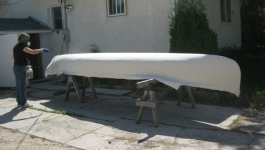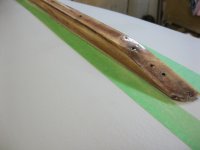- Joined
- Jun 30, 2014
- Messages
- 1,550
- Reaction score
- 572
It said mineral spirits or paint thinner so I used some varsol that I had. It seemed to work ok but the wood is really dry and sucked it up. That was the idea though. Another full coat this week, maybe 3 or 4 on the gunwales.
Yeah the idea was to only do the repairs that were absolutely necessary. No cosmetics. I had debated painting the interior but opted for varnish. It is looking good. I need a good paint scheme though.
In case you were all wondering....the PC in the title stands for Port Colborne...that is where the boat came from.
Christy
Yeah the idea was to only do the repairs that were absolutely necessary. No cosmetics. I had debated painting the interior but opted for varnish. It is looking good. I need a good paint scheme though.
In case you were all wondering....the PC in the title stands for Port Colborne...that is where the boat came from.
Christy
Last edited:
















